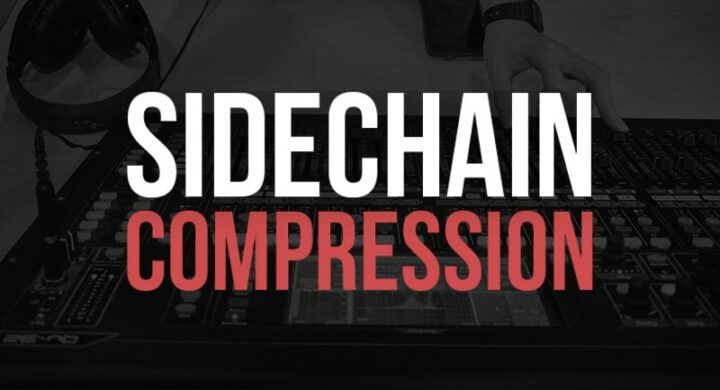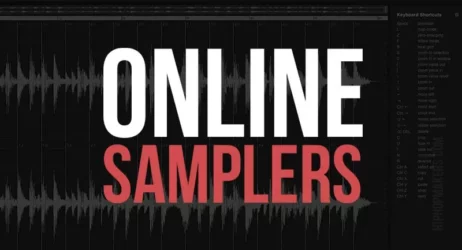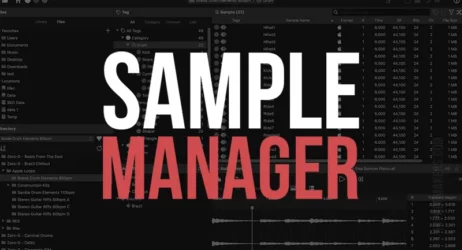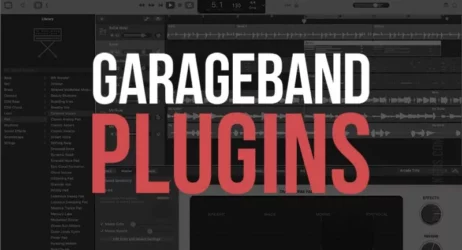This guide will answer what sidechain compression is, what it’s used for, whether it is necessary, and how to use it when creating music.
What Is Sidechain Compression?
Sidechain compression is a way of using one signal to control another. Typically, this allows you to use an external instrument or MIDI track as the “trigger” for a compressor effect. You can also use sidechain compression with other effects, such as reverb or delay.
- What Is Sidechain Compression
- Sidechain Compression Uses
- How Do I Use Sidechain
- What Is Sidechain Processing
- Is Sidechaining Necessary
- Why Is It Called Sidechain
- What Are Sidechain Instruments
- What Does Sidechaining Mean In Logic
What Is Sidechain Compression?
Sidechain compression is a technique used to make specific song elements distinct and blend well with the rest of the music.

The concept of side-chaining is found within the realm of electronic dance music, where it’s used extensively. Sound designer Douglas Shearer invented the technique.
It works by utilizing an external input (or trigger) to act as the control source for another output (effect). For example, a kick drum could be used to trigger a compressor on a synthesizer, or a synth bassline could be used to trigger reverb on vocals.
Tips & Tricks For Using Sidechain Compression
The primary purpose of sidechain compression is to make a sound or instrument stand out from the rest of the mix. To achieve this, you will generally want to use a compressor with a low ratio and a slow attack.
Remember that you don’t need to go overboard with this technique. Two or three dB of gain reduction should be enough to get the job done.
You also want to shorten the compressor’s release time to ensure that there isn’t a significant gap between when your trigger signal stops and when your main signal starts.
Otherwise, the compressor will free up and actually accentuate any frequencies in your trigger signal that it perceives to be louder than the rest of the mix.
Examples Of Sidechain Compression In Music
Sidechain compression is used in all genres of music, but it’s particularly common within electronic dance music.
Some artists incorporate sidechain compression practically in their entire production.
If you listen to any bass-heavy EDM track, you’ll likely notice that the kick drum triggers a compressor on a synth or bassline that’s playing a pattern in the same rhythm.
Avicii – Levels (Original Mix)
This song makes heavy use of sidechain compression on the synthesizers to make space for the kick drum. You can hear the synthesizers come in and out of the mix as the kick drum hits, and the compressor gets activated and deactivated by the kick. Some of the most famous songs that utilize this technique are as follows:
Swedish House Mafia – One (Your Name)
This song makes heavy use of sidechain compression on the synth pad that follows the chord progression. You can hear how it gets quieter every time the bass hits and more dominant when the kick drum is playing.
Disclosure – F For You (ft. Mary J Blige)
The kick drum triggers a compressor on the bassline throughout this song. You can hear how it gets quieter when the kick drum feels more strongly in the mix and becomes more pronounced during the chorus when the bass plays low notes.
Calvin Harris – Summer (Original Mix)
This song makes heavy use of sidechain compression on the synthesizers. You can hear how the synthesizer starts very quiet and becomes more pronounced as the song progresses.
Nero – Me and You (Dirtyphonics Remix)
In this song, the trigger for the sidechain is a high-pitched sound that only occurs periodically during the mix. You can hear how some aspects of the mix, such as the vocals and lead synthesizer, cut out entirely as the high-pitched sound plays.
What Is Sidechain Compression Used For?
Side-chaining is used to make certain frequencies stand out more and even out the volume of a mix. It can also make everything blend better by reducing the volume of specific frequencies when other sounds are present.
Here’s where it gets tricky: different instruments have different frequency ranges. Try to keep this in mind when you’re side-chaining. If your synth bass is getting drowned out by the hi-hats, then you might want to lower the synth’s volume or use a compressor with a high ratio and a low threshold.
How Do I Use Sidechain?
First, put your compressor on the track that you want to the sidechain. Next, create an instrument or MIDI track and put it next to the chain. Finally, set your compressor to respond to the signal coming from this external input/trigger track.
These are just some of the basics of side-chaining. You’ll need to experiment with it yourself, but you should have a good idea of what’s going on after reading over this. It can be challenging to wrap your head around at first, but it’s a great technique when you get the hang of it.
Here are the settings you’ll want to try:
Cutoff > This is the cutoff frequency on your low-pass filter.
Ratio > Higher is usually better, but too high of a ratio can cause problems.
Attack > Lower values are typically best here. Avoid high attack rates for this effect.
Release > This is the rate at which your volume returns to normal after being reduced by the threshold setting.
Threshold > This is the volume at which the compressor kicks in. The higher this value, the more your signal will be reduced when the external input is louder than the threshold.
Knee > Most of the time, it’s best to leave this at its default value.
Makeup Gain > This allows you to boost the output volume without changing the overall dynamic range. It’s almost always a good idea to use this.
What Is Sidechain Processing?
Sidechain processing is the same concept, except it doesn’t have to be done with an external instrument. You can use sidechain compression with an effect on an instrument, too.
It’s typically applied to vocals in this case. For instance, try using a compressor on a vocal track, with the sidechain being a guitar track. All of the volume fluctuations from the guitar track control how loud the compressor makes the vocal track.
Is Sidechaining Necessary?
Not at all. It’s relatively uncommon to use sidechain compression and processing in music, and there are other ways to achieve the same result.
However, you may find that it enhances your track in some way. Again, it’s a technique that can be overwhelming to understand at first, but sidechain processing can be beneficial after you get the hang of it.
By following the above settings and tips, you’ll be well on your way to using sidechain compression effectively in no time. Experiment with it yourself and see what you can come up with.
Why Is It Called Sidechain?
In audio production, the term “sidechain” refers to an instrument’s compression in response to another sound or group of frequencies. It is called a “sidechain” because the compression typically occurs on a separate track from the original signal it is affecting.
Sidechain compression is sometimes referred to as ducking. It is the same concept, but “ducking” is used when the compressed signal is a vocal track.
What Are Sidechain Instruments?
For the most part, sidechain compression is used on synthetic or virtual instruments. However, it can also be used with organic mix elements, such as acoustic drums and percussion.
This technique can be applied to any instrument, but it works particularly well on electronic ones with a lot of low-frequency content.
If you want to use sidechain compression on an acoustic instrument, try pairing it with a synth sound that has a similar frequency range. This will result in a smoother sidechain trigger.
A common instrument that uses sidechain compression is the hi-hat. The compressor can be triggered by a low-frequency element in the mix, such as a kick drum or bassline.
Sidechain compression is also used on vocal tracks to make them more intelligible or to smooth out an awkward transition in the mix.
Another musical element that uses sidechain compression is lead synthesizers, playing the same rhythm as a kick drum or a separate melody entirely.
If there is a snare drum in your mix, you can use it to trigger the sidechain compressor on any other element that needs more prominence.
However, it’s important to note that if you have too many sidechain elements in the mix, it may become too hectic and unpredictable. This is why many producers only use sidechain compression on select instruments throughout the mix.
What Does Sidechaining Mean In Logic?
Logic Pro X has a wide range of processors available in the mixer. One of these is the sidechain compressor, which allows you to compress a track based on the sound of another track. In other words, the audio from another track is used as a trigger for the compressor plug-in.
The most common use of sidechain compression in Logic is to compress a synth or bass based on the bass drum. This creates a pumping effect that adds rhythmic elements to the low frequencies. It is also popular with vocals, typically for a rhythmic impact of some kind.
You can use sidechain compression in Logic on individual tracks, but you can also use it with the channel strip. This allows you to automate the compression and make it more dynamic by changing the settings over time.
Recommended Tools
Here are the most popular audio mixing products on Amazon.
- The Mixing Engineer’s Handbook: 5th Edition
- Step By Step Mixing: How to Create Great Mixes
- Great Live Sound: A Practical Guide
- Mixing Audio: Concepts, Practices, and Tools
- The Mixing Mindset: The Step-By-Step Formula
- The Art of Mixing: A Visual Guide to Recording
Summary of Sidechaining
Sidechain compression is a method of controlling one signal with another. This usually allows you to trigger the compressor effect using an external instrument or MIDI track. Sidechain compression can also be used with other effects, such as reverb or delay.
I hope you now have a better understanding of sidechaining and how to use it when creating music.




